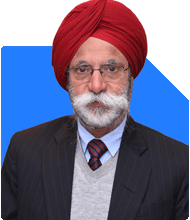Hi, I am 35 years old. I am married and have 2 kids.
I have 30L in mutual funds spread across Quant ELSS (9L), Quant Multi Asset (5L), ICICI Pru Equity &Debt (7L), and Kotak Debt fund (5L). Remaining is spread across small and midcap funds.
I have 30L in PPF and 4L in NPS (started in 2023). I have a monthly SIP of 40k, and a house loan with 25L outstanding.
Further, have 10L in LIC and 1.5cr worth Term insurance (fully paid for).
My first house is self occupied and 2nd can fetch a rent of 30k in a few months time.
How much corpus can I aim for if I continue investment till 55 years (unsure of job continuity in IT sector). Both my kids are daughters and their education could be significant expense going by the fees hikes (6yrs and 2 yrs). Please guide me.
Also, do you help plan portfolio, and if so, how can I hire you please?
Ans: You’ve built a strong foundation already. You’ve spread your assets wisely across mutual funds, PPF, NPS, and insurance. Your awareness of job uncertainty in the IT sector, along with your responsibilities towards two young daughters, shows a clear mindset.
Let us now assess your current position, future goal feasibility, and scope for betterment — step-by-step — from a Certified Financial Planner perspective.
Present Financial Strength – A Quick Snapshot
You have Rs. 30 lakhs in mutual funds.
Your funds are spread across ELSS, multi-asset, equity & debt, small and midcaps.
Rs. 30 lakhs is invested in PPF — this is tax-free and risk-free.
NPS corpus is Rs. 4 lakhs — still new, but growing steadily.
Monthly SIP is Rs. 40,000 — that is strong and consistent investing.
You have a house loan with Rs. 25 lakhs balance — manageable if income stays stable.
LIC worth Rs. 10 lakhs — traditional policies often offer low returns.
You hold a paid-up Rs. 1.5 crore term insurance — excellent move.
You expect Rs. 30,000 monthly rent soon — this adds passive income.
Age is 35 — you have 20 years till age 55. Good time frame to build corpus.
Two daughters aged 6 and 2 — education and marriage are major goals.
Strengths in Your Portfolio
Your SIP amount is Rs. 40,000 monthly. This builds discipline and long-term wealth.
You have well-diversified mutual fund holdings across asset classes.
PPF gives you a solid debt component and future tax-free maturity.
NPS is also building retirement support, although partially taxable.
Term insurance is enough to protect family in case of risk to life.
LIC is traditional. But if it’s an endowment or money-back, consider surrendering.
Second house rental of Rs. 30,000 adds safety buffer for job loss or added SIP.
Areas That Need Adjustment
LIC returns are often around 4%-5% post tax. That’s too low for long term growth.
If the LIC is investment-linked (not term), consider surrendering and reinvesting.
Rs. 4 lakh in NPS is too low now. You may step it up gradually to get 80CCD(1B) benefit.
Rs. 30 lakh mutual funds across too many schemes may lead to overlap.
Too much exposure to small and midcap can add volatility.
There’s no clarity if these mutual funds are regular or direct. If direct, switch.
Always invest through Certified Financial Planner via MFD in regular plans.
Direct plans lack personal review. They miss risk assessment, goal matching and timing.
Regular plans through a CFP bring monitoring, timely rebalancing, and behavioural coaching.
Index funds are not suggested — they follow markets blindly.
Active funds, managed by experts, help during market corrections and give better long-term returns.
Asset allocation, risk profiling, and rebalancing are not possible in index funds.
Future Goal Planning — With 360° View
Education of Both Daughters
Your first daughter is 6 years now.
She will enter graduation in 10-12 years. Expenses may be around Rs. 50-60 lakhs or more.
Your second daughter is 2 now. Her education will peak after 14-16 years.
You need to earmark Rs. 1 crore or more combined, for both higher education.
This will rise with inflation. Education cost doubles every 8-9 years.
Start two separate SIPs of Rs. 10,000 each. One for each daughter.
Assign suitable mutual funds with proper time horizon and risk appetite.
PPF for children is helpful but may not beat inflation alone.
So mix equity and hybrid mutual funds for education. Keep reviewing every 2-3 years.
As you near the goal, shift to safer debt funds to avoid market shocks.
Daughter’s Marriage Goal
Marriage is an emotional goal. Many parents want to give their daughters best.
You may need Rs. 40-50 lakhs for each daughter in 20-25 years.
Do not compromise your retirement for this.
Keep a separate SIP for each marriage goal. Can start with Rs. 5,000 monthly per daughter.
Increase SIPs every year by 10%-15% to beat inflation.
Use mix of large and multi cap funds for long-term wealth here.
Retirement Planning — Age 55 Dream
You want to retire at 55. You are 35 now. That gives 20 years.
After that, you may live another 30 years or more. That needs a big retirement corpus.
Currently, you have Rs. 30L in mutual funds, Rs. 30L in PPF, Rs. 4L in NPS.
Your SIP is Rs. 40,000 monthly — which can grow well in 20 years.
However, remember that kids’ education and marriage will take away part of this wealth.
Hence, you must do retirement planning separately.
At least Rs. 15,000 of your SIP should be marked only for retirement.
Increase this every year by 10%-15%. Your income will also rise.
PPF and NPS are supportive, but equity mutual funds will be main engine.
Don’t depend only on PPF. Real return after inflation is very low.
Avoid mixing emergency corpus and retirement corpus.
Rental income is welcome, but don’t consider it main retirement source.
Property maintenance, tenant risk, vacancy are issues in old age.
Better to have SWP from mutual funds post 55 for monthly income.
Shift lump sum from ELSS, mid cap, etc. to balanced or hybrid funds post 50.
Use retirement calculator every 2 years to track your goal value and SIP adequacy.
Emergency Fund and Home Loan Handling
You have Rs. 25L outstanding on home loan.
If interest rate is above 8.5%, try part-prepay it using excess cash.
But don’t rush to close home loan by using your PPF or SIP.
Keep 6-9 months of expenses in liquid or ultra-short debt fund.
Rental income of Rs. 30,000 per month can partly cover EMI.
Once rent starts, you can divert your savings more towards retirement.
What Can Be Your Corpus by Age 55?
You already have Rs. 30L in MFs, Rs. 30L in PPF, Rs. 4L in NPS.
With Rs. 40,000 SIP and increase every year, and 20-year horizon, good wealth is possible.
If you invest consistently and increase SIPs by 10% yearly:
You may reach Rs. 3.5 Cr to Rs. 4 Cr in mutual fund corpus by 55.
PPF corpus may become Rs. 75-90 lakhs.
NPS can grow to Rs. 40-50 lakhs.
Total retirement corpus may touch Rs. 5.5 Cr to Rs. 6 Cr range.
This is possible only if kids’ goals are separately planned.
If kids’ education and marriage costs are pulled from the same corpus, it reduces to Rs. 3.5 Cr.
That is not enough for 30-year retirement.
Hence, separate SIPs for education, marriage, and retirement is must.
Actionable Steps To Take Now
Surrender the LIC policy if it is not term-based. Reinvest amount in mutual funds.
Classify mutual funds into three buckets — education, marriage, retirement.
Separate SIP for each. Increase every year.
Don’t hold too many funds. 6-8 well chosen funds are enough.
Prefer regular funds through MFD guided by CFP, not direct funds.
Direct funds lack human rebalancing, emotional coaching, and proper risk alignment.
Don’t invest more in real estate now. Maintenance and liquidity are issues.
Review your asset allocation yearly. Keep 60:40 ratio equity:debt for long term.
Use tax-loss harvesting every March to manage mutual fund capital gains.
Follow the new MF tax rules:
- Equity LTCG above Rs. 1.25L taxed at 12.5%
- Equity STCG taxed at 20%
- Debt funds fully taxed as per your slab.
Assign nominees to all accounts. Digitise your financial records.
Make a will and power of attorney. It secures your family’s future.
And lastly, review all goals with your Certified Financial Planner every 12 months.
Finally
You’re on a good path. But your goals are heavy and time-bound. Your SIP and assets can support your dreams — only if each rupee is purpose-tagged and regularly reviewed.
Don’t mix goals. Assign each investment with a future outcome. Match time, risk, and return.
Surrender slow-moving products like LIC and switch to active funds.
Avoid direct plans, index funds, or annuities. They look cheap, but they cost you in the long run.
You have time, energy, and discipline. Combine that with guidance from a Certified Financial Planner.
Yes, we offer complete portfolio review, SIP guidance, and goal-based financial planning.
We also support you in mutual fund implementation via MFD route. All investments are mapped, monitored, and rebalanced periodically.
You can connect with our team anytime from the website link below in the signature.
Let’s shape your dreams into reality — one step, one SIP, one strategy at a time.
Best Regards,
K. Ramalingam, MBA, CFP,
Chief Financial Planner,
www.holisticinvestment.in
https://www.youtube.com/@HolisticInvestment





















.jpg)